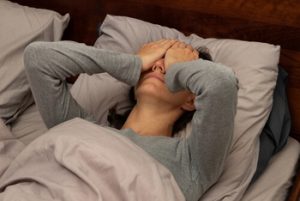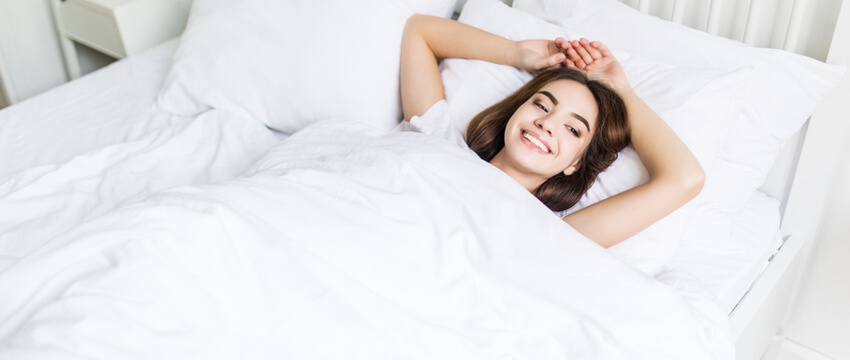Ever wake up feeling like you barely slept? Or maybe your partner’s mentioned your loud snoring or even that you stop breathing during the night? These could be signs of obstructive sleep apnoea, one of the most common sleep disorders affecting Australians today.
Fortunately, there’s a straightforward way to find answers: a sleep apnoea test. In this blog, we’ll walk you through what a sleep apnoea test involves, why it matters, and how it could completely change your sleep health. Whether you’re experiencing daytime sleepiness, waking up with a dry throat, or simply not feeling refreshed in the morning, you’re in the right place.
Let’s Talk About Sleep Apnoea: What Is It Exactly?
Obstructive sleep apnoea (OSA), sometimes spelled obstructive sleep apnea, is a condition where your airway becomes partially or completely blocked during sleep. This causes your breathing to pause repeatedly, sometimes for 10 seconds or longer.
These breathing pauses can occur dozens or even hundreds of times per night, leading to poor sleep patterns, reduced oxygen levels, and chronic daytime fatigue. Over time, untreated sleep apnea has been linked to serious health issues like high blood pressure, heart disease, and even stroke.
The scary part? Most people don’t know they have it. In fact, undiagnosed sleep apnoea is a growing public health concern, with the global prevalence steadily increasing.
What Are the Symptoms of Obstructive Sleep Apnoea?
Sleep apnoea can present in subtle and not-so-subtle ways. Some of the most common symptoms include:
- Loud, persistent snoring
- Daytime sleepiness or feeling exhausted even after a full night’s sleep
- Gasping or choking during sleep
- Waking with a sore or dry throat
- Difficulty concentrating
- Mood changes or irritability
- Morning headaches
- Waking frequently during the night
If any of these sound familiar, it may be time to speak to your doctor about a sleep test to diagnose sleep apnea.
The Gold Standard: What Is a Sleep Apnoea Test?
A sleep apnoea test, also known as a sleep study, is the gold standard method to diagnose and assess sleep disordered breathing conditions like OSA.
There are two main types of tests:
- Home Sleep Test (Level 2 or 3)
- In-Lab Sleep Study (Level 1)
Let’s unpack these so you can determine which one might suit your needs.
Home Sleep Tests: Convenient, Comfortable, and Often Enough
A home sleep test is a convenient way to assess for moderate obstructive sleep apnea from the comfort of your own bed. Your doctor may recommend this option if your symptoms point to OSA and you don’t have other complex sleep disorders.
What’s Involved?
You’ll be sent home with a portable testing kit that typically monitors:
- Breathing effort and airflow
- Blood oxygen levels
- Heart rate
- Snoring
- Sleep position
Some kits may also record limited brain activity and muscle activity.
Pros of a Home Sleep Test
- Easy to do at home, no need to stay overnight in a sleep lab
- More affordable than lab-based studies
- Comfortable, familiar environment
However, it’s not suitable for everyone. If your symptoms are complex or if initial results are inconclusive, you may be referred for an in-lab sleep study instead.
In-Lab Sleep Studies: The Full, Comprehensive Test
This is the most detailed and reliable test available, especially if you’re dealing with multiple or complicated sleep disorders. Also known as a polysomnography, this test takes place overnight in a specific sleep lab under medical supervision.
What Gets Measured?
This comprehensive test tracks:
- Brain activity
- Eye movement
- Muscle activity
- Heart rate
- Blood oxygen levels
- Airflow
- Breathing effort
- Body position
- Movements
It can even detect other types of sleep-disordered breathing that a home test might miss.
When Is an In-Lab Test Necessary?
- If you have other health conditions like heart disease or neurological disorders
- If the home test doesn’t provide clear results
- If central sleep apnoea or complex sleep patterns are suspected
- If you need to test for other sleep disorders, like restless leg syndrome or narcolepsy
How Do I Know If I Need a Sleep Study?
The first step usually starts with your doctor. They’ll assess your symptoms and may suggest further evaluation.
You might be recommended a test if:
- You’ve reported snoring, gasping, or choking during sleep
- You experience excessive daytime sleepiness
- You’ve been told you stop breathing in your sleep
- You have high blood pressure or heart disease
- You’ve tried to treat insomnia without success
- You’re always waking tired despite a full night’s sleep
What Is It Like to Do a Home Sleep Test?
Here’s a simple breakdown:
- You’ll collect your equipment from the clinic or have it delivered.
- That night, you’ll place sensors on your chest, finger, and under your nose.
- The device will record key data like oxygen levels, heart rate, and breathing.
- Return the device the next day.
- A professional will interpret your results and provide a diagnosis.
Some clinics offer multi-night tests to ensure accuracy if your symptoms vary from night to night.
Diagnosing Obstructive Sleep Apnea: What the Results Mean

- Number of apnoeas (breathing pauses) per hour: known as the Apnoea-Hypopnoea Index (AHI)
- Duration of each apnoea
- Changes in blood oxygen levels
- Sleep stage disruptions
Severity Levels:
- Mild: 5–14 apnoeas/hour
- Moderate: 15–29 apnoeas/hour
- Severe: 30+ apnoeas/hour
A diagnosis of moderate obstructive sleep apnea or worse typically means that treatment is strongly recommended.
What Happens If Sleep Apnoea Is Left Untreated?
Left untreated, sleep apnoea can seriously impact your life and health. Aside from chronic fatigue and difficulty concentrating, the risks include:
- Increased risk of high blood pressure
- Greater likelihood of heart disease and stroke
- Worsening mental health
- Poor quality of life
- Increased risk of accidents due to sleepiness
The good news? Once diagnosed, most patients see a dramatic improvement in their sleep health with the right treatment.
Treatment Options: What Comes Next?
After your diagnosis, your doctor will recommend a treatment based on the severity of your condition.
1. CPAP Therapy
The most common treatment for moderate to severe OSA is the use of a CPAP machine (Continuous Positive Airway Pressure). It keeps your airway open using gentle air pressure while you sleep.
2. Lifestyle Changes
- Losing weight
- Avoiding alcohol and sedatives
- Quitting smoking
- Changing sleep positions (e.g., side-sleeping)
3. Oral Appliances
For mild to moderate cases, a dentist may create a custom mouthguard-like device that helps keep your airway open.
4. Surgery
Sometimes, surgery may be required to remove blockages in the airway, especially if there’s a structural cause like enlarged tonsils.
The Importance of Taking Action
If you think a sleep test could benefit you, don’t delay. Many Australians live with undiagnosed OSA for years, attributing their exhaustion to “just being busy” or “getting older.”
But remember: good sleep is essential to every aspect of your health. Diagnosing obstructive sleep apnea early can be a game changer, literally adding years to your life.
Frequently Asked Questions About Sleep Apnoea Tests
- Is sleep apnoea more common in men or women?
Sleep apnoea is more commonly diagnosed in men, particularly middle-aged and older men. However, women, especially post-menopausal, can also be affected, though symptoms may present differently.
- Can children have sleep apnea too?
Yes, children can experience obstructive sleep apnoea, often due to enlarged tonsils or adenoids. If your child snores loudly, breathes through their mouth, or struggles with daytime behaviour and focus, speak with a doctor.
- Will I need to stop taking medications before a sleep test?
It depends. Some medications can affect sleep patterns or brain activity during testing. Always check with your doctor beforehand.
- Can I take a sleep apnoea test if I have a cold or allergies?
It’s best to reschedule if you’re congested or unwell, as this can temporarily affect breathing and lead to inaccurate results.
- How do I prepare for an in-lab sleep study?
Avoid caffeine and naps on the day of the study. Bring comfortable sleepwear, and follow your usual night routine. Avoid alcohol or sedatives unless instructed otherwise by your doctor.
- What is the Apnoea-Hypopnoea Index (AHI)?
AHI measures how many times per hour your breathing stops (apnoea) or is severely reduced (hypopnoea) during sleep. It helps determine the severity of sleep apnoea.
- Do I have to use a CPAP machine forever?
Not necessarily. Some patients improve through weight loss, surgery, or other treatments. However, CPAP is often the most effective long-term solution for moderate to severe cases.
- Will I feel the sensors during the test?
The sensors used in both home and in-lab sleep tests are designed to be as non-intrusive as possible. You may be aware of them initially, but most people sleep quite well once they adjust.
- Can sleep apnoea be completely cured?
While there’s no one-size-fits-all cure, treatment can dramatically reduce symptoms and risks. Some patients experience complete resolution after significant weight loss or surgery.
- How soon will I get my sleep study results?
Results usually take a few days to a week, depending on the clinic. Your doctor will review the findings and discuss your treatment options if a diagnosis is confirmed.
Final Thoughts: Better Sleep Starts with a Simple Test

So, if you have been battling snoring, waking tired, or constant daytime sleepiness, it’s time to book an appointment with Melbourne Dental Sleep Clinic. You deserve restful, uninterrupted nights, and this test could be the key.
Contact us at:
Caulfield North : (03) 9068 5355
Footscray: (03) 9068 5357
Niddrie: (03) 9068 5316
References:
Cleveland Clinic. (n.d.). CPAP machine. Cleveland Clinic. https://my.clevelandclinic.org/health/treatments/22043-cpap-machine
Mayo Clinic. (n.d.). Sleep apnea: Symptoms and causes. Mayo Clinic. https://www.mayoclinic.org/diseases-conditions/sleep-apnea/symptoms-causes/syc-20377631
MedlinePlus. (n.d.). Sleep study. U.S. National Library of Medicine. https://medlineplus.gov/lab-tests/sleep-study/
Sleep Foundation. (n.d.). What is AHI?. Sleep Foundation. https://www.sleepfoundation.org/sleep-apnea/ahi



